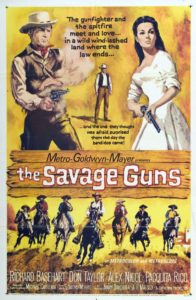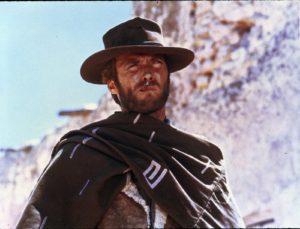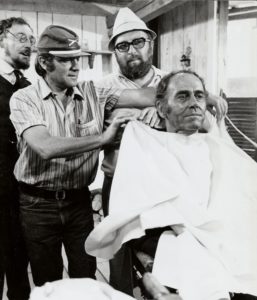
The 60’s was a decade of change for the movie industry. Films had been getting progressively more “mature” in their content since the mid 50’s. This trend accelerated throughout the decade in which I first became aware of my surroundings and my place in the world. By 1968, the MPAA had instituted a ratings system, intended in large part to allow parents to control what sort of films their children would be allowed to watch.
One of the genres which accelerated the process was that of the low-budget Italian western, aka the Spaghetti Western.
I capitalize the term out of respect. That’s a lot more respect than Hollywood critics gave it back in the day.
The classic Spaghetti Western is nowadays linked to the Man with No Name trilogy: Sergio Leone’s A Fistful of Dollars, For a Few Dollars More, and The Good, the Bad, and the Ugly. But as I learned in penning this piece, there were, in fact, many, many more low budget films cranked out of Italian studios during the Decade of Change.

The first Spaghetti Western was 1961’s Savage Guns. Interestingly, no Italian involvement was included in this film. Hollywood had declared the western genre passe by then. Producer Michael Carreras, who had handled some horror films of the 50’s, wanted to do a western, but couldn’t get any support. So he formed his own film company, went to Europe, and began shooting out in the desert of Almeria, Spain. Carreras managed to convince three American actors from his former employer, Hammer Studios, to star in the film. The rest of the parts were played by Spanish actors, unknown on this side of the pond.
The movie had a decent-sized budget, and had a professional air about its production, but it tanked at the box office, and put Carreras’ fledgling company out of business. It also reaffirmed Hollywood’s stance that the western was dead.
However, Carreras was onto something. Production costs overseas were negligible compared to southern California. There was a slew of actors available and eager for work. And the desert of southern Spain made for a convincing clone of the American southwest. Plus, if you wanted to make a western in the day, you pretty much had to bypass Hollywood.
Italian filmmaker Sergio Leone was a fan of the epic story. In 1959, he stepped in and finished The Last Days of Pompeii when its producer fell ill, his first producer gig. Two years later, he produced his own epic, The Colossus of Rhodes. The Italian films had modest budgets, but closely duplicated the look of more expensive Hollywood productions.
However, in Italy, the day of the epic film was past. Leone was a fan of the great Japanese moviemaker Akira Kurosawa and his Samurai tales. They had an epic feel to them, but the stories played out like westerns, with good guys battling bad guys in a lawless time.

In 1964, Leone hired American TV actor Clint Eastwood to star alongside Italian actors to film A Fistful of Dollars. The movie had a hard edge to it, unseen in American westerns up until that time. Violent scenes were thrust upon the viewer after tense buildup, accompanied by music from Ennio Morricone that can only be described as quirky and irresistible. The plot was basically copied from a 1961 Kurosawa offering,Yojimbo. In this case, imitation was a form of flattery, as Leone retold the Samurai story respectfully to his mentor’s Japanese language original premise.
The film was released in the US in 1967. The critics panned it and made fun of its low-budget look and bad lip syncing. In doing so, they overlooked a nice piece of art, which eventually came to be appreciated with time. The movie made good box office money anyway.
Leone’s next film, For a Few Dollars More, featured Eastwood and another American actor who had thus far only been able to land character roles, Lee Van Cleef. The 1965 film was a European success, and in 1967 did pretty well in the US, too. Again, this was despite the critics’ discouragement.
By the time Leone had begun filming the third movie, The Good, the Bad, and the Ugly, he was rewarded with a respectable seven-figure budget, as opposed to the $200,000 he had to work with for the first film. Leone hired Eli Wallach to play the part of Tuco, “the Ugly.” He was impressed with his work in How the West Was Won, a movie which had somehow gotten released in Hollywood in 1962, against all odds. Van Cleef received the role of Angel Eyes, “the Bad,” and Eastwood reprised his nameless role as the doer of good who still manages to look out for himself.
The movie was an American smash when released late in 1967. Audiences were able to see all three films within a short period, and they were thus viewed as a trilogy, despite ambiguousness about what times periods they were actually meant to depict. For example, there was the 1873 gravestone seen in the third “Civil War era” film.
Leone went on to produce numerous other movies, mostly westerns. He, along with other Italian filmmakers, reenergized a movie theme which had become boring. He also made a star out of Clint Eastwood, and enhanced the careers of Van Cleef and Wallach.
So here’s to the Spaghetti Western, and its most familiar faces.